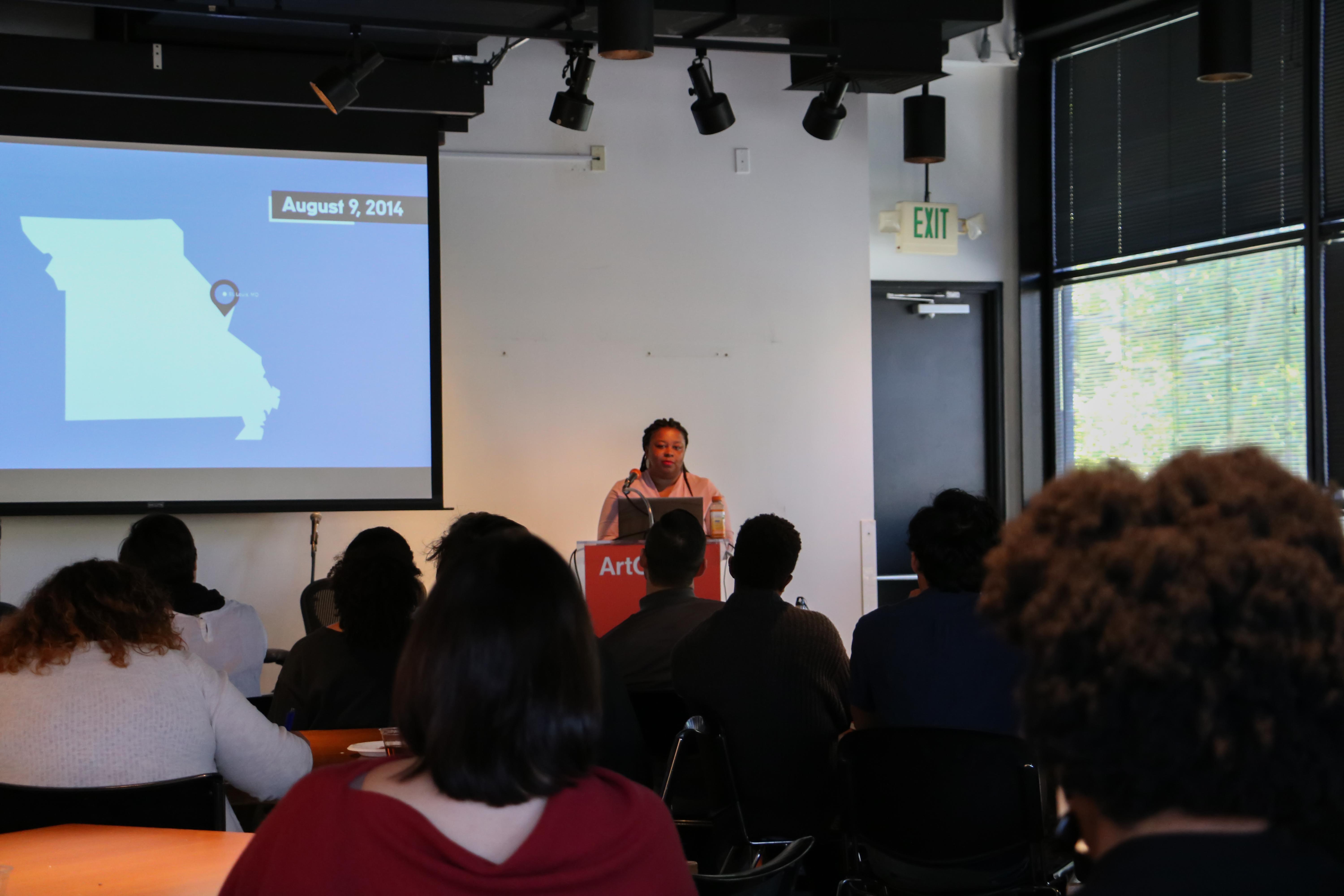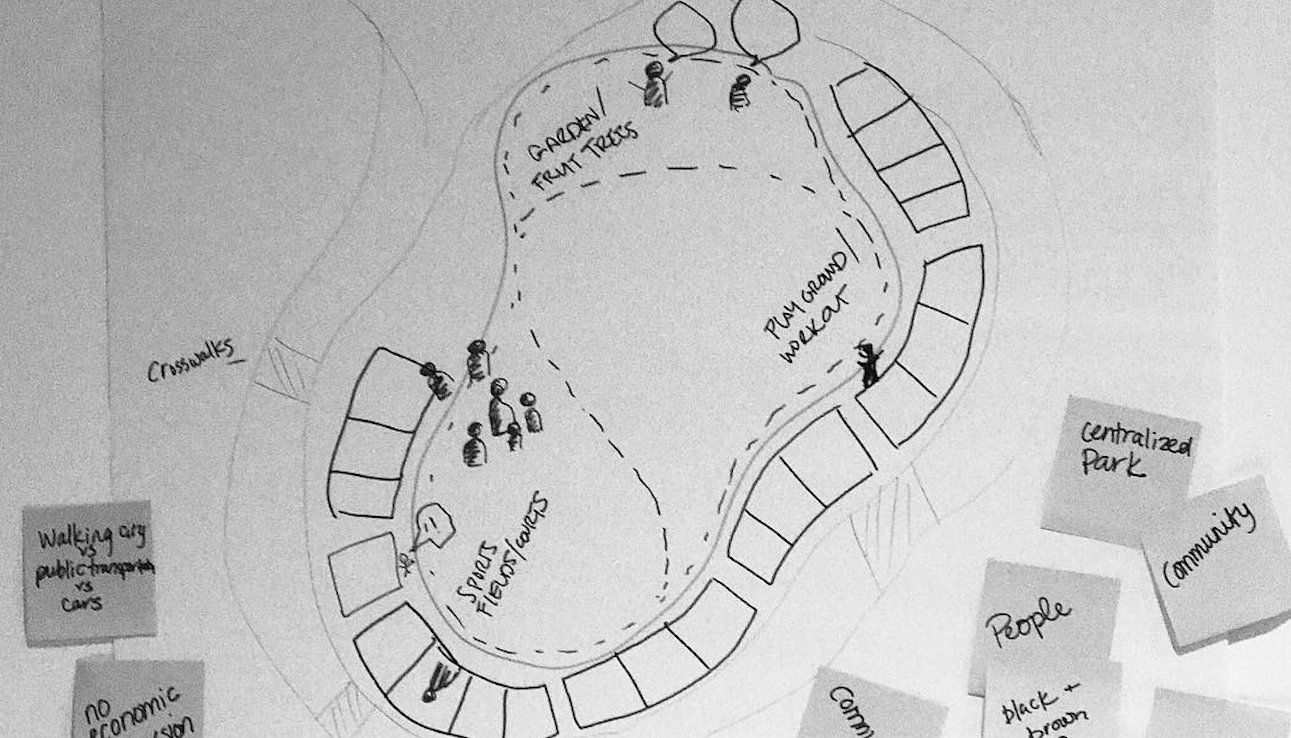During Week 4, Antionette Carroll, founder and CEO of Creative Reaction Lab, visited ArtCenter. Creative Reaction Lab is a nonprofit social enterprise that educates, trains and challenges cities to co-create solutions with Black and Latinx populations to design healthy and racially equitable communities. Carroll hosted a workshop and lunch time presentation to discuss questions of race, class, gender and justice. Graduate Media Design Practices students, Lauren Williams and Bianca Nasser share their experiences.
LW + BN: As a non-designers navigating design school, we are always on the lookout for models who have found ways to focus their practice on the intersection between design and some other field.
LW: As a Black woman, I’m always excited to see peers and leaders in the field who reflect similarly rare identities within the design world. Antionette Carroll—both a woman of color and one whose work sits right at the juncture of the two fields I hope to marry through my work, design and social / economic justice—was a welcome rarity on ArtCenter’s campus.
I was struck by the way the workshop exercise elevated us toward a conversation about worldview and speculation that might not have arisen in a typical dialogue. We were invited, in small groups, to illustrate our “ideal city block.” As each group sketched our block, we collectively considered: What would it look like? What would be on it? Who would be there? While every group offered a block that might differ from what you’d encounter in a typical city—in some there were oddly-shaped streets, in others there were flying cars—we were all still constrained by the visions of city blocks that we know to be familiar and, in some cases, economically feasible. As we critiqued each group’s drawings, I was reminded how much more challenging it is to imagine new worldviews and systems than it is to imagine new things. If we can conjure up flying cars and open air parks on top of skyscrapers as near future realities, why can’t we imagine a new system of urban development, real estate and finance along with them?
BN: ArtCenter faculty often remind students that during times of constant technological transformation and global change designers must be daring, critical, and engaged in their communities. Throughout her lunch presentation, Antoinette showcased work, such as Connected for Justice—a volunteer matching platform for anti-racism activists in Ferguson—that asked the public to value designers not only for their craft, but for their ability to navigate and respond to complex systems. She outlined ways designers could challenge existing privilege, access and power dynamics within current human-centered design practices through direct actions that ask design practitioners to be more intentional about the way they engage communities and systemic issues. For example, by inviting community members to contribute as as living experts, we might respectfully integrate them as co-collaborators in the design process. Throughout her remarks, Antoinette showed us the many ways our world demands new design practices and perspectives.
LW: Antionette challenged us to think about the ways we use language to facilitate or communicate about design. For example, what are the implications of labeling people who might interact with some design object a “user?” What associations or significant meanings might that word inspire? How might those associations differ among different groups of people? And, more importantly, what are the implications of using language imbued with such meaning? In provoking questions like these, she also encouraged us to work through the other potential consequences of our work. When designing objects, experiences, or communications, how can we consider not just who will “use” this thing, but who else has a stake in it?
LW: For me, all of these threads are irrefutably connected and codependent. I’m grateful to this session for the reminder and reinforcement. Like Antionette, I want to find ways to reimagine complex systems—cities, economies, pedagogies, government agencies—in order that they operate more equitably. Imagining complex systems like these through design demands that we consider and share the power associated inherent in redesigning them with all those affected, not just those currently in a position to do so. It also requires us to prioritize considerations of consequence and implications alongside—sometimes above—deliberate choices about form, operability, creativity, utility and aesthetic.


